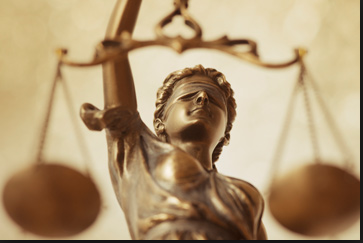As an academy and in-service instructor, I have noticed how often cadets and seasoned officers can divorce themselves from the reality of the experience of others. I remember specifically a colleague who was a firearms instructor conducting a range day that included some dash-cam videos of officers being assaulted. We watched a horrific replay of an officer on a traffic stop being brutally beaten in a blitz attack, then murdered before our eyes. The instructor’s comment was “She didn’t have the will to live”. I don’t know whether she had the mythical warrior mindset or not, but I do know I had stood in her shoes, in proximity to a traffic offender, and had been knocked unconscious on the pavement. Was it because I lacked the tactical knowledge or the will to live? Of course not. But I did put myself in a vulnerable position on that night on that stop, trying to deal with a carload of characters. By the grace of God and a backup officer, I was not killed.
We imagine ourselves as our fictional heroes, making all the
right moves in the glorious fog of battle because we’ve poked holes in paper
targets and run through some scenarios at the shoot house. All good, but as
anyone who had been the target of someone actively trying to make you die can
testify, training is vital, but reality is terrifying. Officers who should be
moving tactically sometimes look like a squirrel in the road not sure which
direction to go. I remember asking the occupant I had arrested after a pursuit
and crash what happened. He replied that he wasn’t sure but all of the sudden
this lady cop was yelling at him to get out of the car. We had no women on duty
that night, so apparently, my voice went up a few octaves under stress.
Experiencing shock and pain is not pretty. Indecision is
awkward. Obeying orders that are bad ideas is cognitively torturous. Wanting to
charge in is natural for most cops because we’re used to being independent
decision-makers, but we also are trained to coordinate when in teams and follow
the chain of command. Who wants to pick up the dropped battle flag unless we
know the platoon will follow us? Self-doubt under duress sometimes masquerades
as self-assessment. One is unhelpful, the other essential. So, before we join
the chorus of condemnation, let’s humble ourselves for a minute, and put our
feet in the boots of the officers that day.
The interim legislative report wisely states: “Based on the
experiences of past mass-shooting events, we understand some aspects of these
interim findings may be disputed or disproven in the future.” We also know that
if something new and positive eventually surfaces it will not see the light of
day in the media. If some new damning information arises, it will be in the
mouths of every network anchor.
Would police leaders who respond and advance toward shots
fired always have the immediate thought of getting out of there and setting up
a command post? There’s always criticism of chiefs who forget that they are
still cops. What about the cops that forget they are chiefs? I’m certain that among
the dozens and dozens of officers present, the vast majority were willing to
march into the danger zone and die for the kids. But at what point does heroism
become strategically foolish? At what point is survival to continue the mission
more important than proving you care enough to generate a grand police funeral?
With the unfixed locks and the lax adherence to routine
safety policy and confusion of multiple crimes being reported and the failure
of radios and alerts, can we crush that last domino that fell in the series and
think we’ve addressed the tragedy enough that we can walk away with confidence
saying “things would have been different if I’d been there”? I’m not an
apologist for what happened or should have happened on May 24th at Robb
Elementary, but context here is critical.
Should we analyze the hell out of this thing? There is no
question that we must. The dead deserve it. The community deserves it. The cops
deserve it. Every nervous teacher and scared student in the country deserves
it. But let’s do this with humility. If you haven’t read the latest evidence
and reports from credible investigative bodies, then you are relying on the
same media you criticize for the false narratives about policing that are so
pervasive. Maybe no comment until you know as much as you can. No eye rolling,
no shoot-from-the-hip second-guessing, no denial that you might have done the
same thing in the same circumstances. The tragic deficiencies overshadow the
notion that there were heroes on that day, but there were many.

